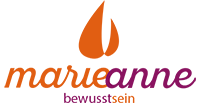Best Trading Platform for Forex A Comprehensive Guide 1669827172
Best Trading Platform for Forex: A Comprehensive Guide
If you’re looking to dive into the exciting world of Forex trading, choosing the right trading platform is crucial. A great trading platform can make all the difference in your overall trading experience and success. In this article, we’ll explore the best trading platforms for Forex, and you can also visit best trading platform for forex forex-exregister.com for further insights and options.
What to Look for When Choosing a Trading Platform
When selecting the best Forex trading platform for your needs, several key factors should be considered:
- User Interface: A user-friendly platform allows you to navigate easily and access the tools you need without frustration.
- Fees and Commissions: Look for platforms with competitive spreads and low commissions. High fees can chew into your profits.
- Trading Tools and Resources: The availability of analytical tools, educational resources, and charts can significantly aid in your trading decisions.
- Regulatory Compliance: It’s essential that the platform is regulated by a recognized financial authority to ensure safety and security.
- Customer Support: Reliable customer service can be a lifesaver when you encounter issues or have questions.
- Mobile Accessibility: A robust mobile application can help you trade on the go, which is critical in the fast-paced Forex market.
Top Forex Trading Platforms
1. MetaTrader 4 (MT4)
MetaTrader 4 is one of the most popular trading platforms globally. It’s highly regarded for its advanced charting capabilities, technical analysis tools, and automated trading functionality through Expert Advisors. MT4 is user-friendly and is suitable for both beginners and experienced traders.
2. MetaTrader 5 (MT5)
MetaTrader 5 is the successor to MT4, offering even more features, such as more timeframes, advanced order types, and additional technical indicators. MT5 supports stock and commodity trading in addition to Forex, making it an all-in-one platform for users interested in diversifying their portfolios.
3. cTrader
cTrader offers a modern interface and is well-known for its excellent trade execution speed and advanced trading features. It includes a function called cAlgo, which allows traders to create custom trading algorithms. cTrader is particularly popular among algorithmic traders.
4. TradingView
While TradingView is primarily a charting platform, it also allows for trading directly through multiple brokers. It offers social trading features where traders can share their strategies and insights. The platform is highly regarded for its powerful charting tools and a vibrant community of traders.
5. NinjaTrader
NinjaTrader is tailored towards active traders and features advanced charts, trading analytics, and automated trading capabilities. It’s ideal for those who engage in high-frequency trading and require robust tools for market analysis.
How to Start Trading on a Forex Platform
Once you’ve selected a trading platform that suits your needs, the onboarding process typically involves the following steps:
- Create an Account: Sign up with your personal information and set up your account by following the platform’s registration process.
- Verify Your Identity: Most platforms require identity verification, which may include providing identification documents.
- Fund Your Account: Deposit funds through available methods. Options may include bank transfers, credit cards, or e-wallets.
- Download Trading Software: If you’re using desktop software like MetaTrader, download and install it on your device.
- Conduct Market Research: Before entering any trades, study market conditions, technical analysis, and fundamental factors affecting currency pairs.
- Start Trading: Begin trading by selecting currency pairs, analyzing charts, and placing orders based on your strategies.
Pros and Cons of Online Forex Trading Platforms
Pros:
- Accessibility: Trade from anywhere in the world at any time.
- Variety: Choose from numerous platforms and brokers, each with unique features.
- Advanced Tools: Access to a wide range of analytical tools, charts, and indicators.
- Demo Accounts: Many platforms offer demo accounts to practice trading without risking real money.
Cons:
- Risk of Loss: Trading Forex involves significant risk and can lead to losses.
- Overtrading: The ease of access may lead to impulsive trading decisions.
- Technical Issues: Online platforms can experience downtime or technical glitches.
Conclusion
Choosing the best trading platform for Forex is a vital step in your trading journey. The right platform can enhance your trading experience, streamline your processes, and ultimately increase your chances of success. Whether you opt for MT4, MT5, cTrader, TradingView, or NinjaTrader, make sure it aligns with your trading style and objectives. Always remember to trade responsibly and continue learning and adapting as you grow in this dynamic market.
